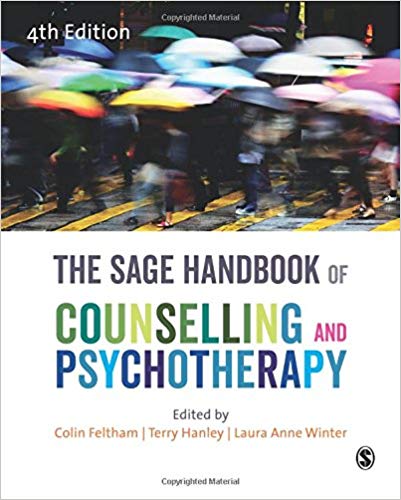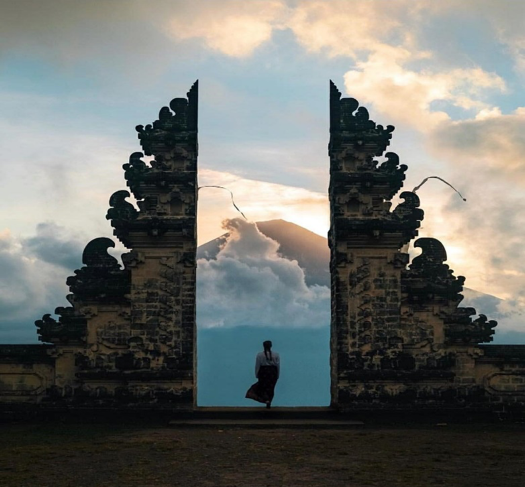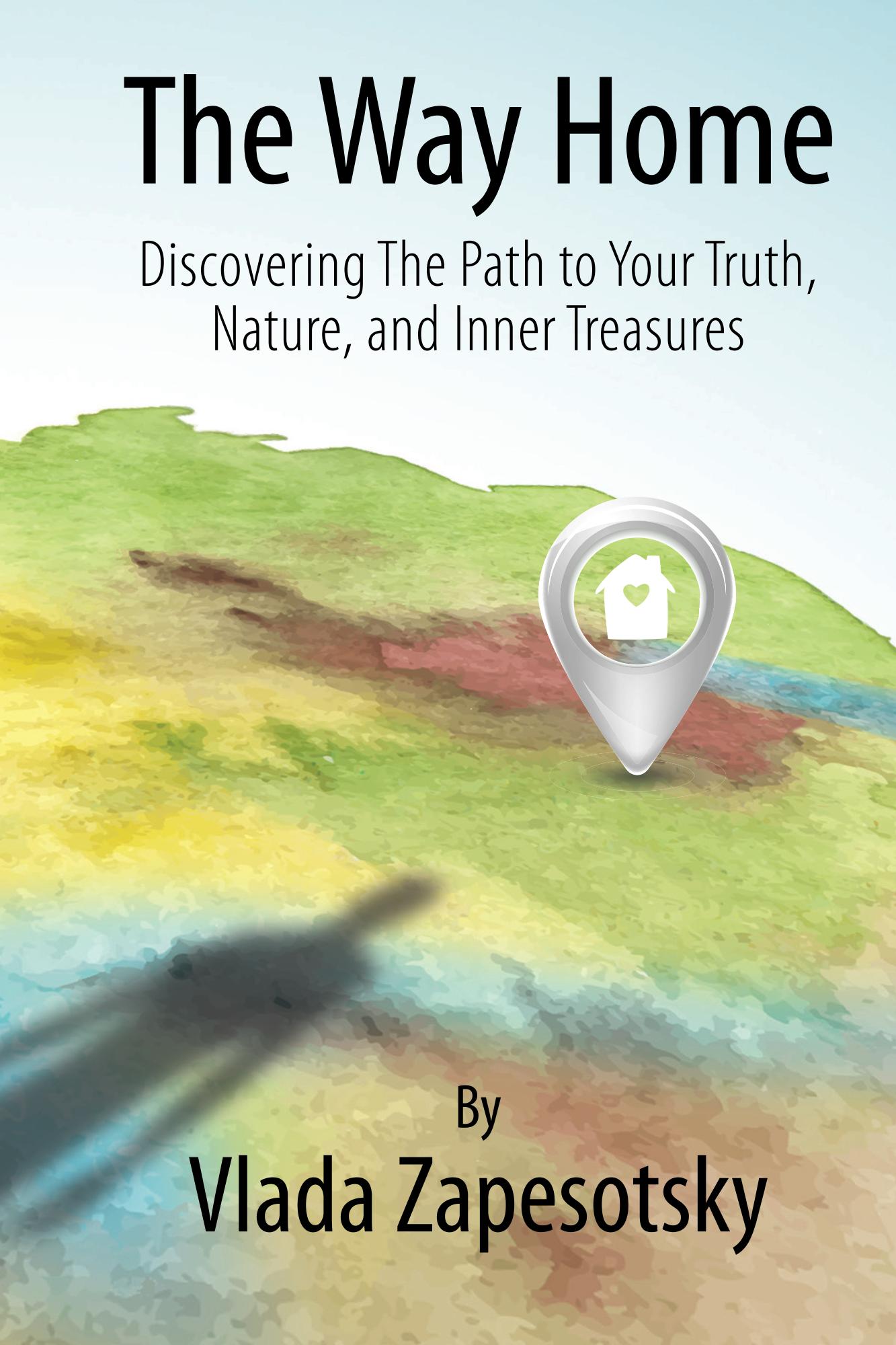
At over 600 pages and with more than 100 contributions, this Fourth Edition brings together the essentials of counselling and psychotherapy theory, research, skills and practice. Including new content on assessment, theory, applications and settings, and with new chapter overviews and summaries, this continues to be the most comprehensive and accessible guide to the field for trainees or experienced practitioners.
Baim, C. (2017). ‘Psychodrama,’ in Colin Feltham, Terry Hanley and Laura Ann Winter (Eds.) The Sage Handbook of Counselling and Psychotherapy (4th edition). Los Angeles, CA and London: Sage Publications.
This book is available on Amazon.
The TSM Six Safety Action Structures have been developed and used to concretize spontaneity and provide containment and group cohesion for all Therapeutic Spiral Model (TSM) groups for several decades now (Hudgins & Toscani, 2013). The original paper on these safety structures (Cox, 2001) is available on my website at www.drkatehudgins.com. This handout is an expansion on the original use of the structures with examples of how they can be used in individual, couples, group and family therapy, as well as in communities and organizations. At the workshop, they are presented in action just as they would be used to start a TSM group in any of the above settings. Read more

10 – 15 February, and 17 – 22 March, 2019
These retreats will each combine 30+ hours of personal growth, psychodrama sessions with diverse cultural adventures on the beautiful and mystical island of Bali in Indonesia. Included will be a trip to the famous Tanah Lot Temple, one of the ten most photographed sites in the world. Free time for exploration and relaxation is also included. Psychodrama hours may be used toward certification by the American Board of Examiners, the Korean Psychodrama Association, The North American Drama Therapy Association, and Therapeutic Spiral International. (Check with your local certifying board to see if they accept these hours as well.)
Costs:
- The fee for all psychodrama sessions over six days, seven community meals (four dinners and 3 lunches), and all cultural events is US$550 per person inclusive.
- A 50% deposit will hold your place and is due no later than 2 Jan for Feb. retreat and 4 Feb. for March retreat.
- Balance due on first day of retreat. Those who pay in full by deposit date pay only $500 per person.
- Transportation and accommodations are not included. Participants will receive suggestions for reasonably-priced accommodations within walking distance of the psychodrama venue.
Psychodrama Venue and Trainer:
TAKSU HEALING HAVEN – Ubud, Bali – is a jungle paradise in the Heart of Ubud. It features a World Class Spa & Salon, Restaurants, Yoga, and Workshop Spaces. Participants will receive a 15% discount on any additional food and beverage and on all Spa services. Visit www.taksuspa.com for a listing of services available. Visit www.taksuhealinghaven.com for a listing of the healing practitioners in residence and the services they offer.
MARIO COSSA, RDT/MT, TEP, and TSM Trainer – founder and Director of Motivational Arts Unlimited, Indonesia, will be your Psychodrama Director and guide for this experience. Mario brings decades of experience as a group facilitator and psychodrama director and has worked in the USA, Canada, the UK, Australia, New Zealand, Malaysia, Indonesia, Korea, and China. Please visit his website: www.dramario.net
To Indicate Your Interest:
Please e-mail mario@dramario.net with a brief statement of your interest and previous psychodrama and/or drama therapy experience, and preferred contact method. Your expression of interest does not commit you in any way. Additional information and registration details will be sent.
Click below to see the newsletter that was sent to subscribers!

I am here to inform you about the release of my book The Way Home: Discovering the Path to your Truth, Nature and Inner Treasures.
This is a very exiting time for me and I am looking forward to share my book and the vision that’s behind it with the world. I really hope that this book reaches many different people because I believe in its healing energy, clear messages and a safe structure that can allow everyone to connect to his/her own Inner Home.
Synopsis: “The Way Home” opens with a heart-warming and creative fairy tale describing the journey of self-discovery that all humans yearn to undertake, yet are afraid to without a proper guide. In this book we learn how to “activate” our personal inner guides and personify these inner voices to serve us in our healing journey. The inner life (psyche) is described as a Home with multiple rooms to which we can return for new discoveries and self-care. It is as simple as: “you do not need to know how to get where you are going; you only need to make a choice…connect to [your] personal soul navigator who will lead [you] Home-to Your True self.”
You can find it on Amazon here.
If you are interested in reviewing the book, please let me know and I will send you a free electronic version.
Please, feel free to spread the word and share it with your community!!! Let’s make The Way Home approachable to as many people as we can!!!
Blessings!!!
Vlada Zapesotsky, MA, PAT, AL-TSI
Founder of International Foundation of Healing and Creativity “The Way Home-to your True Self”. Practitioner-trainer, author, speaker.
Over the past years, I have researched and developed a healing concept and action model called The Way Home to Your True Self, which is a practice of returning to one’s inner beginning, one’s true nature and whole self. This concept of ‘return’ does not mean that the person is going backwards to where he or she had started life. Rather, it is a journey of discovery in which he or she is able recognize this inner space of the natural and true self, to enrich it, and to start building a unique, flexible and safe inner container that is appropriate in the here-and-now. I named this space “The Inner Home” because this metaphor describes in detail all the components of our inner space, reflecting the personality, belief system, imagination, actions, and creative sparks. This inner space might be called a person’s Soul and is built from true and tested strengths, abilities, and resources. The main component of such an Inner Home is the feeling of being our own person, or our Self, in which safety, containment, truthfulness, spontaneity, and free expression are states that we experience naturally in our own home-space.
In my work, I discovered various techniques based on Classical Psychodrama, as well as TSM, that help clients realize how far they are from their own Inner Home, what blocks their path, and how they can remove the obstacles on this road home. The tools I developed help the client understand how to get on the path, own it, and live it. Just these first steps prove to be healing, giving a sense of mindfulness, joy, and tranquility. Most significantly, while I worked with many different individuals, I have not met one who could not connect to this universal concept of Home or who could not understand the feeling of being at home with him-or herself, regardless of their cultural or religious beliefs. People who have participated at least once in a psychodrama session, and of course, those who are experienced psychodramatists, know very well how much psychodrama techniques help one feel their spontaneity and creativity, and most importantly believe that they can live a new experience here-and-now. Aware of this, I noticed the same almost “magical” effect on the client just by the mention of his or her Inner Home where the true self lives. As soon as one has the opportunity to believe that his real nature, soul, inner truth is still alive and safe, and to feel a connection with this inner space, it is as if some invisible force (I call it “Soul GPS”) switches on and leads the person on a unique and safe path, returning to his true, contained, and genuine Self.
Having this roadmap myself, my work as a therapist and director became much more focused and productive. Instead of wandering with the client in his or her vast inner world and reliving the many inner dramas (many of which are interesting but not specifically related to self-discovery), the protagonist begins to recognize the way that is true and constructive, leading to the direction of reclaiming the knowledge that it is he or she who knows the path to the Inner Home. Throughout many such sessions, I was discovering together with my clients the reasons or inner motives for distancing, fleeing from, or blocking a connection to the Inner Home. Below, I list the most frequent reasons.
- The person’s early environment or space, where he or she grows and develops as an individual.
If, during one’s childhood, the closest people (trusted adults) do not accept the person’s nature, do not give the child a chance to express openly and naturally, or simply ignore the existence of that child’s truth, that child begins to hide the truth from the others, and eventually from him or herself as the only way to survive in that family or society. In other words, the person is forced to reject his or her own personal Inner Home, a natural, unique structure, in the name of his parents’ home or social space. After being rebuffed for who he or she is, the person starts to reject or betray his or her own self. There are rare cases when, even at a young age, a person has enough inner strength to resist and defend his true Self, but such resistance might be coupled with a feeling of shame, guilt, fear, and self-judgment. Or, even upon winning to stay true to himself, the person usually cannot allow himself to live fully his own truth and to grow in his own true Inner Home. The hard-won battle at such a young age may leave scars of defensiveness and other detrimental protections.
- “The internal wanderer syndrome,” a name I have given to a life perceived as a pointless adventure. Here, the search becomes more important than the discovery.
This happens when a person evolves and grows without recognizing or attributing much importance and value to his or her own life experience. Passing through various stages of life, the person is preoccupied almost exclusively with external events and happenings, thus is little or not at all familiar with his or her own inner world. Such a person may have an unrestrained desire to discover new and different experiences: how foreign people live, trying different professions, finding himself in surprising life situations, etc. In other words, attempting to find his own personal Home, this person must first travel the world to finally realize that he or she has had all the important and true parts already within.
While many and varied experiences are not inherently maladaptive, they can be used to avoid one’s true nature. Often, a serious life shakeup will force such a person to stop and make a conscious choice to seek his or her own truth and real Self. When this person decides to remain still and face herself, in spite of the fear and even panic that can release, she will now have the opportunity to find this safe, free and peaceful feeling of home, finally belonging.
- Traumatic experiences (especially, at an early age) that bring the feeling that someone “takes over” the Inner Home, destroys it, or forces a person to leave it as an escape.
One of the most dramatic and, unfortunately, most common reasons for people distancing or dissociating from their Inner Home is a traumatic episode at a young age (emotional, verbal or physical abuse). It does not have to be a specific incident, but may be a state in which a child feels damaged, in danger, abandoned, or lonely in his fragility and vulnerability. As soon as the feelings of danger, shame, and fear appear in a child, the need to protect the Inner Home (by surrounding it with many defenders, fortresses, walls, dragons, and other defense mechanisms that help survival) becomes essential. The next step toward salvation may be a desire to escape as far as possible from his or her own Inner Home or truth because the inner reality becomes too harsh, painful or even dangerous. Similarly, a need may arise for an extreme measure—to split the inner world into separate pieces, and thus make The Way Home more untenable. Sometimes the person may focus on the external space, avoiding the inner one in order to not hear the calling of the Inner Home or the Self”
(I describe in detail the inner reality of a trauma survivor and his/her path to his own Self in my book The Way Home: Discovering the Path to your Truth, Nature and Inner treasures, available on Amazon in print and Kindle).
It is hard to imagine a person, who finds him or herself subjected to destructive life circumstances that force a distance from the Inner Home, who does wish to escape and search for a better reality ‘out there’. Yet, however significant the reasons that separate one from his or her truth and essence are, I have found to be true that the connection with the Inner Home is never interrupted or totally lost. Thus, a return to one’s self is first a question of a conscious choice at an appropriate time. As in any other conscious process, the most important part is to take the first step in the right direction. As soon as the first step is made, one can get on the path that begins to carry him or her. And as we all know from the many fairy tales and stories told in books, movies or songs, the Way Home is always filled with faith, meaning, and light. This journey to our Inner Home is metaphysical, mythical, spiritual, and tangible.
Vlada Zapesotsky, MA, PAT. Founder of International Foundation of Healing and Creativity, “The Way Home- to Your True Self. Author of the book The Way Home: Discovering the Path to Your Truth, Nature and Inner Treasures.
Written by Lindsay Huei-Mei Chang, MBA/MA and Nien-Hwa Lai, Ph.D.
PDF is here.
ARCHIVES
- December 2024
- January 2021
- November 2020
- August 2020
- July 2020
- April 2020
- March 2020
- January 2020
- September 2019
- August 2019
- July 2019
- June 2019
- May 2019
- April 2019
- February 2019
- January 2019
- October 2018
- July 2018
- June 2018
- May 2018
- April 2018
- March 2018
- February 2018
- January 2018
- December 2017
- September 2017
- August 2017
- July 2017
- June 2017
- May 2017
- April 2017
- March 2017
- February 2017
- November 2016
- October 2016
- August 2016
- July 2016
- June 2016
- April 2016
- March 2016
- January 2016
- December 2015
- November 2015
- July 2015
PAGES
- Home
- MEET THE TSI TRAINERS AND TEAM MEMBERS
- LINDA CIOTOLA, M.ED., TEP
- Mario Cossa, RDT/MT, TEP, CAWT
- Axel Eichel, M.Sc., TSI Trainer, HP Psychotherapy
- Monica Forst, Registered Psychotherapist, M.Ed., I.C.A.D.C., C.C.C.
- Kate Hudgins, Ph.D., TEP
- Sylvia Israel, LMFT, RDT/BCT, TEP
- Ben Rivers, PhD, RDT, APTT
- FRANCESCA TOSCANI, M.ED., TEP
- Vlada Zapesotsky, Ph.D., PAT
- TSI Calendar
- Certification Process
- Connecting With Us
- The Therapeutic Spiral Model
- Video Gallery
- Blog
- Resources
- Research
